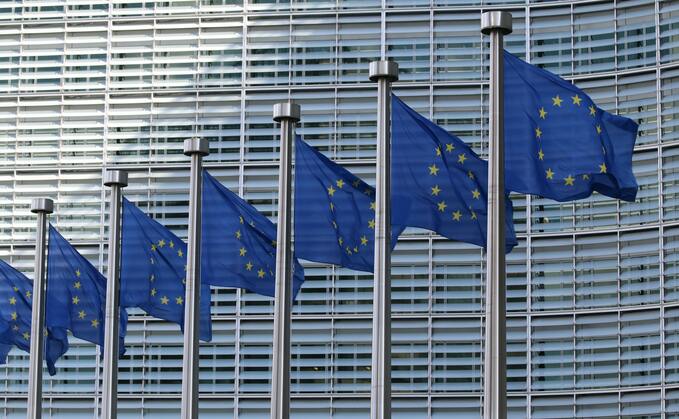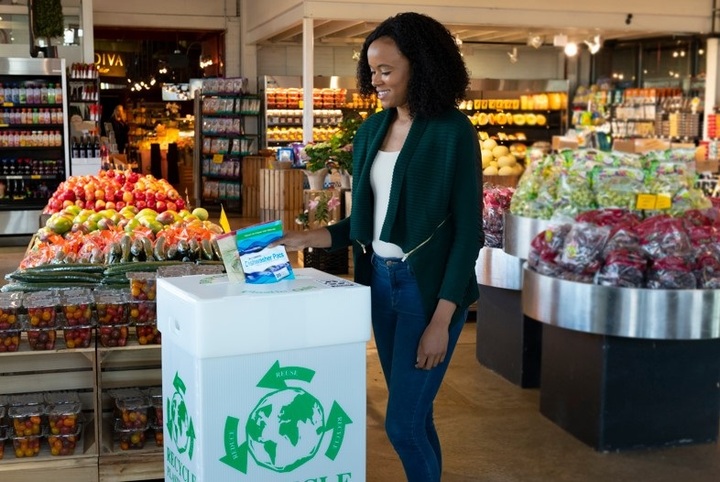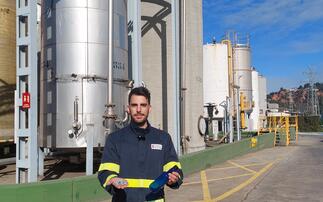
Industry Voice: Dow’s Carolina Gregorio explains the changes policymakers need to make to support industry level transition to a circular economy
We all know that giving waste a second life is more carbon-efficient than incinerating it, but reaching a definition on what makes an item 'recyclable' is one of the most complex challenges policymakers currently face.
Public focus on the issue has only increased following the European Commission's proposals for a revision of its packaging and packaging waste legislation in November 2022.
The proposal states that packaging (all materials) entering the EU market must meet design for recyclability criteria. The criteria states that packages must have a minimum of 70 per cent recyclability compatibility as of 2030, and packaging must be recyclable at scale from 2035. Plastic packaging will also need to comply with minimum mandatory recycled content targets, which in some cases are not ambitious enough to drive investments in the recycling industry.
Of course, turning any directive into a regulation is in itself a welcome step towards harmonised rules across Europe, ensuring a well-functioning market. Yet, the recent Circular Economy Package - of which this regulation is a central part - is not a silver bullet that automatically streamlines the scattered and varied recycling infrastructure in Europe.
Dow, and the wider industry, are already incorporating ‘design for recyclability' criteria into products: huge progress has been made over the past decade. However, we need more than just goals and ambitions to transform the way we make, consume and reuse plastic, with clear definitions on recyclability. Attention must now be focussed on how government can support the scale up of plastics recycling, following a technology-neutral principle, to support a transition towards an economy that is truly circular.
Moreover, policymakers must also recognise that plastics value chains bear significant circularity potential. Further regulatory action is needed across the plastics value chain to reduce its carbon and environmental impact, namely through improvements to the waste sorting and collection process, and a clear calculation method. This would mean that all recycling technologies, including chemical recycling, contribute to recycled content targets.

Kickstarting the ‘closed loop'
Let's start with looking at how governments can support consumers make the first step in the recycling process to kickstart the ‘closed loop'. Our first major ask for policymakers is the rollout of standardised waste collection provision, across the continent, which includes flexible packaging. Processes currently vary between municipalities and regions which causes confusion and slows down the pace at which the industry can access the raw material required to deliver effective recycling processes.
Effective waste separation at the point of collection ultimately increases the quality and quantity of secondary plastic raw materials that are used to make recycled products. We can't recycle without accessing the material at the beginning of the recycling value chain (or at the end of the product lifecycle).
Secondly, on a logistical level, supporting the intra-EU movement of waste within the Single Market would be a sign of the EU's commitment to meeting its own recycling rates for plastic packaging, and would accelerate a circular plastics economy transition. Industry needs an enabling operating environment that provides steady supply across the EU of the material that can be recycled and returned back into the economy to be reused again and again. This will require, amongst other things, harmonised application of the EU's End of Waste criteria.
Recognising the role of chemical recycling
But what about the recycling processes themselves? Europe has historically depended heavily on mechanical recycling, reforming monomaterial (polyethylene) plastic into Post Consumer Recyclate (PCR) products. But critical products - the packaging that keeps our food safe and fresh, the plastics used in surgical equipment and hygiene products - cannot currently contain mechanically recycled plastics due to strict food contact and safety requirements. We also cannot use recyclates from these products to make new ones for similar reasons. This presents a challenge when mechanical recycling accounts for over 99 per cent of recycling volumes in Europe today.
We can start to tackle this issue via recognition of the role, and the need for upscaling, of chemical recycling. Whilst we cannot and should not disregard mechanical recycling, we need to see mechanical recycling as a complementary technology to chemical recycling. Chemical recycling has a role to play in cases where mechanical recycling is not possible or cannot deliver the desired quality outputs. Chemical recycling transforms plastics waste back into a raw material to be turned back into the equivalent of virgin plastic. In short, we can turn discarded food packaging back into food packaging, helping close the loop and enabling the use of recycled plastics at scale.
Using this method, we can also take a far greater range of plastics waste back - including recyclable flexible films once they've been sorted, further increasing the recycling rates. Much of this type of waste currently is going to landfill or being incinerated. It's worth noting too that in addition to solving the plastics waste issue, chemical recycling reduces the need for virgin fossil feedstock, with a long-term goal of improving overall carbon footprint.
Legal frameworks for labelled content
This leads to our next ask. Chemical recycling processes produce raw materials that can be used again by industry to make new plastics, but the current plastics processes are complex with multiple inputs-outputs streams. We need a legal framework to set out how we can label the quantity of recycled content within a product. There is currently no recognised accounting framework in Europe which allows all chemical recycling processes to be counted towards circular goals. We need a clear calculation method for measuring the recycled content in our products and packaging to meet the EU targets, with recognition of the role of a mass balance approach.
A mass balance accounting system will be familiar to those in the renewables sector, where it refers to the creation of an overall electricity system that sells only as much renewable electricity as is actually produced. In the case of recycling, this would mean a standardised set of rules determining the use of recycled content packaging when both recycled and virgin feedstock have been used. This approach must be in line with the EU waste hierarchy: that is, not allow the use of waste for fuel as recycling. To meet consumer demand for essential products, renewable and bio-based feedstocks are processed together with non-renewable feedstocks, meaning that the renewable content is not always physically traceable throughout the complex production process.
Since feedstocks cannot be switched entirely in one go, we need a ‘chain of custody' model. This means tracking the net quantity of sustainable inputs as they move through the system, ensuring that we are not seemingly producing more sustainable products than is possible based on the initial feedstock quantities. It also means that existing infrastructure can be maximised to gradually upscale the newer recycling technologies, reducing cost and the environmental impact of building new plants in the short term. We ultimately keep carbon in the loop for longer.
The EU Circular Economy Package is certainly ambitious. At Dow, we're confident that the technology exists to make a circular economy a reality - we've demonstrated this through our ongoing partnerships with industry leaders on advanced recycling such as Mura Technology and Valoregen. We are reaching a transformative stage; the benefit of this technology will not be seen by society unless policymakers take steps to support industry: via intra-EU waste movement facilitation, supporting the upscaling of chemical recycling, and the legal recognition of mass balance. The strict time frames Europe has set - packaging recyclability and minimum recycled content targets by 2030, and recycling at scale by 2035 - make action all the more urgent.
Carolina Gregorio is director of sustainability policy and advocacy strategy at Dow Packaging & Specialty Plastics.







